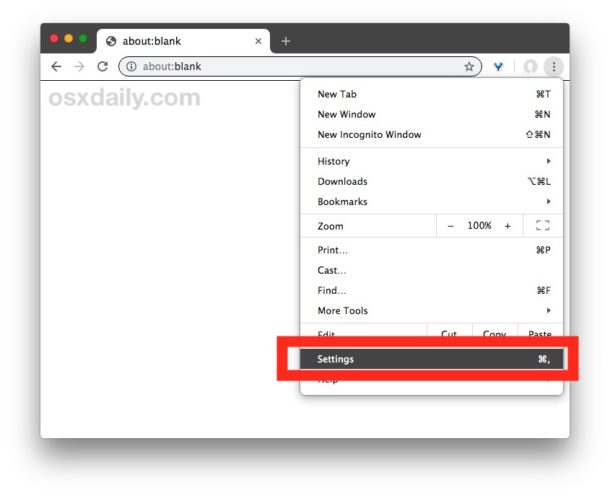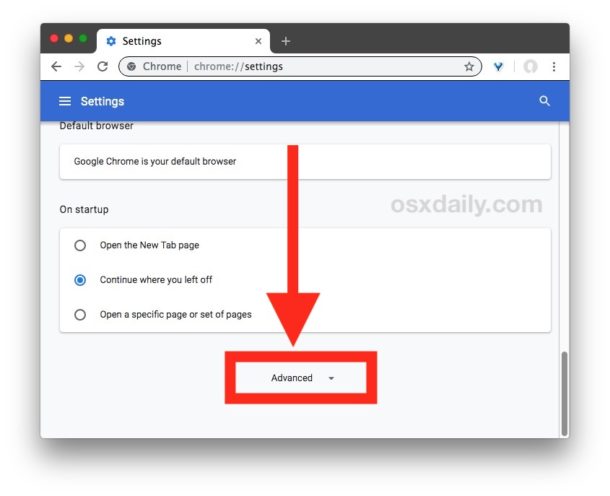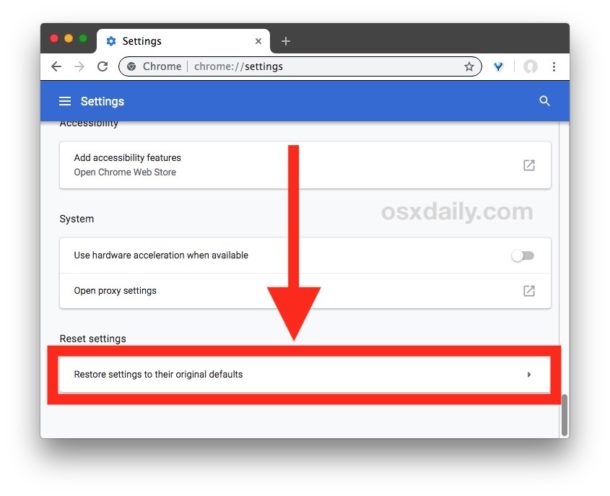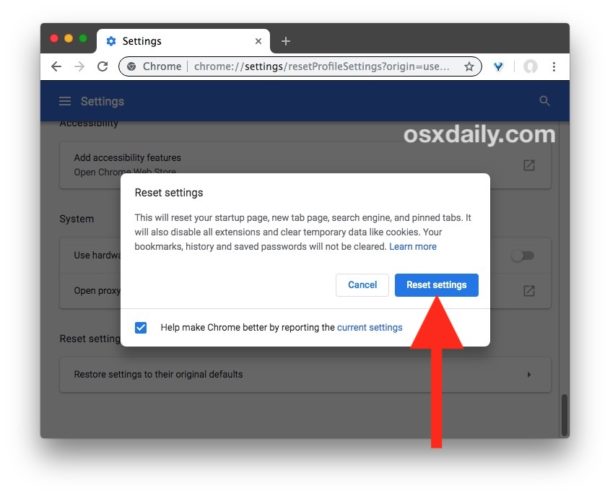How to Reset Chrome Browser to Default Settings on Mac, Windows, Linux
![]()
Need to reset the Chrome browser to default settings? If Chrome is acting up and you want to troubleshoot the browser, or you just want to start fresh, you can easily reset Chrome settings to the original defaults. The process of resetting Chrome web browser is the same on Mac, Windows, and Linux.
Important: Resetting Chrome settings will reset everything about the browser to its default state settings, as if it were freshly installed and not configured. This means any startup home page customizations, tab settings, search engine, pinned tabs, etc will all be reset. Additionally, any and all Chrome browser extensions will be disabled, and all temporary data like caches and cookies will be cleared. Resetting Chrome does not clear out bookmarks, history, auto-fill suggestions, or saved passwords however (currently anyway, as of this writing – if you’re concerned about bookmarks data and passwords you can always export them first).
How to Reset Chrome Browser Settings to Default
Again, this resets just about everything to do with Chrome web browser on a Mac, Windows, or Linux PC, so be certain that is what you want to do:
- Open the Chrome browser to a new browser window
- Click on the dots icon button in the upper right corner, then choose “Settings”
- Scroll to the bottom of the Settings and click on “Advanced” to show more
- Scroll down to find “Reset Settings” and click on “Restore settings to their original defaults”
- Confirm that you want to reset Chrome settings by clicking “Reset settings”




Resetting Chrome can take a moment or two depending on how you have Chrome configured, if you have any (or many) Chrome extensions installed, and other factors including the speed of the computer you’re resetting the Chrome browser on. Just give it a moment.
Once Chrome has been reset, it’s probably a good idea to update the browser too, then quit, and then relaunch the app. You might also want to manually update extensions you plan on using, including updating Flash if you didn’t update the entire browser. Doing this insures that Chrome web browser and its extensions are up to date with the latest version and with the latest features and security updates.
Another option upon relaunching the freshly reset Chrome is to clear Chrome history and browsing data, though as previously mentioned caches will have been deleted in the reset process.
You’ll also likely want to make any customizations you had to Chrome again. For example if you had previously disabled Chrome automatic sign-in to Google services, disabled Chrome web notifications, muted various websites, disabled auto-play, set a custom download location, or any other customizations to the browser, you may want to make those changes again when the browser is finished resetting, as all of those settings will be lost.
Resetting Chrome can also be a helpful troubleshooting technique if you find that the Chrome browser experience is not performing well, if something is wrong, or if the browser has been hijacked by junkware pages, pop-ups, and other rubbish that is persisting past the typical troubleshooting methods of dumping cache and browser data.
Know of any other helpful info pertaining to resetting the Chrome browser? Share with us in the comments!


After I ‘Restore settings to their original defaults’ my camera stopped working on Google Hangouts…any idea why or how to fix?
I have dig everywhere I can think is possible with no luck.
When I look at the HangOut Settings my laptop camera is listed as active, but no thumbnail image is featured (as it should).
Please share any ideas.
Thanks,
Marcia Volpe
I prefer to use CCleaner : it’s more precise. Your method doesn’t clear the history ? ahahahah !!!!
This is how you reset the Chrome browser to default settings, it is literally how to perform that action and not clearing history is the way it works with the Chrome browser.
You can clear history from Chrome though separately, or with an app like you describe.